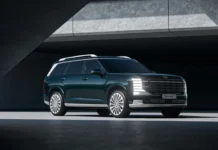
Just as Italy’s Stelvio Pass once was the artificial boundary for 3 countries, the automotive industry once had clear identifying features to distinguish its segments. The lines are becoming even more blurred with each successive model. Alfa’s latest performance SUV, appropriately named Stelvio, is determined to push the boundaries even further and inject the brand’s Italian sports car soul into the SUV world.
At the 2016 L.A. Auto show, covered by TFL’s own Nathan Adlen, Alfa introduced the Stelvio, in Quadrifoglio (high performance) spec, nonetheless. The company claims their small SUV has la meccanica delle emozioni (the mechanics of emotion) and can rightfully wear the Quadrifoglio, which is a symbol of Alfa’s motorsports heritage and some good ol’ fashioned luck.
The Stelvio is the second model in Alfa’s comeback in the U.S. after the 4C. The Giulia sports sedan debuted only a short time prior and the two cars share many of the same components. Most importantly, what has Alfa done to differentiate the two?
Although the Stelvio’s price and timing details are limited, we know quite a bit about its mechanicals. It’s built upon the same, multi-material, rear-wheel drive, platform as the 2016 EuroCarBody Award-winning Giulia sedan, and each model claims of having the most direct steering in its class, near perfect weight distribution, and impressive power to weight ratio.
Also shared with the sedan are the powertrain and drivetrain components. In the Quadrifoglio model (you will come to know that phrase), the 3.9L twin-turbo V6 pushes out 505HP and 443ft-lb of torque. For those willing to brake-torque their nearly $80k (expected) new SUV, Alfa claims a 0-60 mph time of less than 4 seconds. For those less tempted by the most powerful vehicle in its class, a high-output 4-cylinder turbo will also be available. As where the Giulia is offered with rear-wheel drive and all-wheel drive, the Stelvio is only offered with Q4 all-wheel drive. The system can transfer up to 60 percent up to the front wheels. The 8-speed ZF automatic transmission is also shared among the two models, however, only the Stelvio comes standard with a carbon-fiber driveshaft.
The styling of both cars share a clear brand-centric theme with the trilobe grille and the graceful curves along the side to meet into sharp, athletic edges. The greenhouse areas are equally angled forward. Also from the side, one can see that the overall shape is well balanced with little front or rear overhangs and their bodies hang low to the ground. Differences seen with every panel allows the two cars to be recognizable as their own independent version yet allows Alfa to save significantly by using this common platform. It certainly provides some unique flair in this price point.
In a bit of perfect timing, the Stelvio is launching into an already exploding market. We have seen high performance full-size SUV models such as the Range Rover Sport SVR, Porsche Cayenne Turbo S, and Mercedes-Benz GLE AMG63 S, so it’s only natural for the small SUV segment to be ready for a similar high-performance influx. Expect more to come in this upcoming feisty, big boosted performance zone.
By coming out swinging and delivering major performance numbers, they are quickly delivering a message that Alfa Romeo is a performance brand. With access to Ferrari-based powertrains, smart chassis engineering, and its racing pedigree, the Stelvio is a born success.
Check out this TFLcar video of the Stelvio’s LA debut:





























